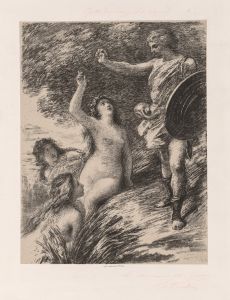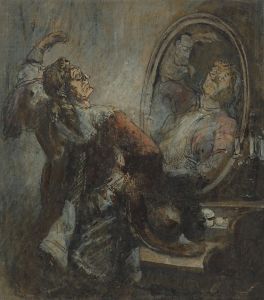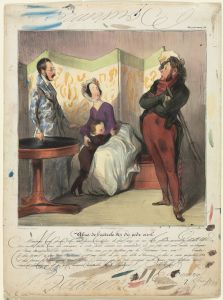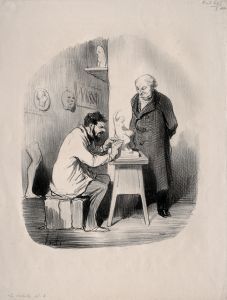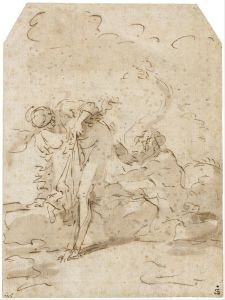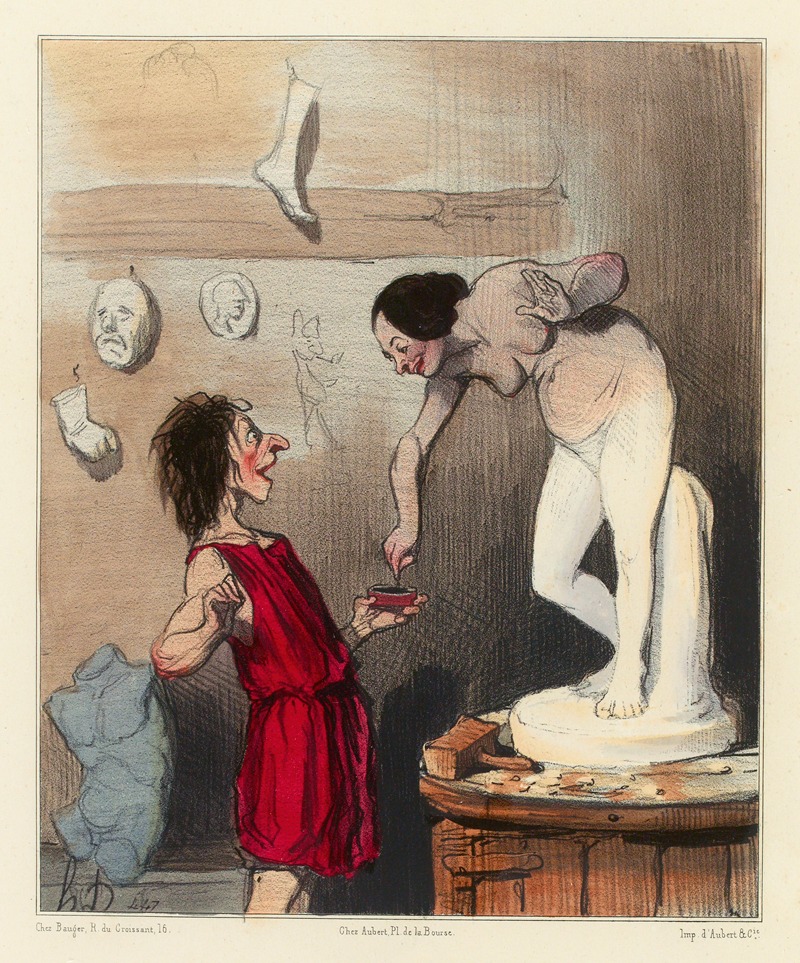
Pygmalion
A hand-painted replica of Honoré Daumier’s masterpiece Pygmalion, meticulously crafted by professional artists to capture the true essence of the original. Each piece is created with museum-quality canvas and rare mineral pigments, carefully painted by experienced artists with delicate brushstrokes and rich, layered colors to perfectly recreate the texture of the original artwork. Unlike machine-printed reproductions, this hand-painted version brings the painting to life, infused with the artist’s emotions and skill in every stroke. Whether for personal collection or home decoration, it instantly elevates the artistic atmosphere of any space.
Honoré Daumier, a French painter, sculptor, and printmaker, is best known for his satirical caricatures and social commentary. Among his works, the painting "Pygmalion" is often cited as an example of his exploration of mythological themes, though detailed information about this specific artwork is limited.
"Pygmalion" by Daumier is believed to depict the classical myth of Pygmalion, a sculptor who falls in love with a statue he has created, which is later brought to life by the goddess Aphrodite. This myth, originating from Ovid's Metamorphoses, has been a recurring subject in Western art and literature. Daumier’s interpretation of the story reflects his interest in human emotion and the relationship between the artist and their creation.
The painting is characterized by Daumier's signature style, which often includes dramatic contrasts of light and shadow, expressive figures, and a focus on the psychological depth of his subjects. In "Pygmalion," Daumier captures the moment of transformation or the emotional connection between the sculptor and his creation. The work demonstrates his ability to convey narrative through gesture and composition, even within a mythological framework.
Daumier's broader body of work often critiques societal norms and explores themes of justice, human folly, and the struggles of the working class. While "Pygmalion" diverges from his more overtly political or satirical pieces, it still aligns with his interest in the complexities of human experience and emotion.
The exact date of the painting's creation is not definitively documented, but it likely falls within the mid-19th century, a period when Daumier was actively producing both paintings and lithographs. The medium is oil on canvas, consistent with many of his other works from this time.
Currently, the painting is housed in the Musée d'Orsay in Paris, France, which holds a significant collection of Daumier's works. The museum's collection highlights his contributions to 19th-century art and his influence on later artists.
Due to the limited availability of detailed records or commentary on this specific painting, much of its context must be understood within the broader scope of Daumier's artistic career and his engagement with both contemporary and classical themes.






